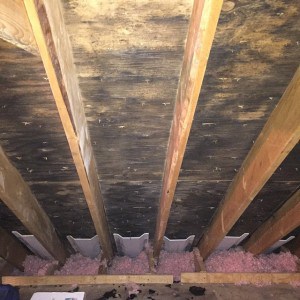Excess moisture can jeopardize your home s structural integrity as it can lead to damage of your home including your walls floors furniture and precious storage and cause health annoyances including allergies or difficulty breathing.
Excess moisture in attic space.
While many homeowners usually associate dampness with basements or crawl spaces attics can suffer from moisture problems just as easily which can lead to damaged insulation structural issues and problems with mold.
The solution is to air seal between the attic and the heated space below.
As the moisture migrates upwards to the colder attic areas during the winter months the relative humidity is increased to the point that condensation can occur on cold surfaces.
When the air is warm it holds a lot of moisture so the relative humidity was low and there was no moisture problem.
Adding insulation with a built in vapor barrier is the final step in combating excess attic moisture.
Attic clean up professionals always look for signs of moisture in attics and homeowners should regularly do this as well.
Insulation is responsible for keeping warm air inside your living space and out of the attic where it can lead to condensation.
The key to ensuring moisture doesn t find its way into your home is by finding out where the water is.
This can result in mold rust and deterioration of wood and structural fasteners.
In the past air leaks existed but the attic was warm because of the lack of insulation.










